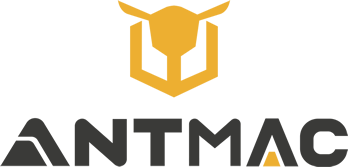Ant Decodes Fault Codes of Aerial Work Platforms: Universal Logic Enables Efficient Maintenance
In the maintenance of aerial work platforms, fault codes serve as the core “self-diagnosis” language of the equipment. As a comprehensive service provider for multi-brand aerial work platforms, Ant deeply dissects the industry’s common fault code system and extracts a “cross-model universal troubleshooting logic”, helping engineering enterprises break through shutdown dilemmas and achieve efficient full-lifecycle equipment management.
Ⅰ. Electronic Control System: “Breakthrough Principles” for Initialization and Communication Faults
▶System Initialization Errors (Typical Code Category: 01)
Triggered by abnormal ECU (Electronic Control Unit) programs or hardware damage during startup. Ant recommends a 3
-step troubleshooting process:
① Restart the equipment to observe if the fault recurs, ruling out temporary program glitches.
② Inspect the tightness and oxidation status of ECU terminal connections, cleaning the contacts.
③ Verify ECU hardware using the “substitution test method.”
▶ System Communication Errors (Typical Code Categories: 02/22)
Caused by interrupted data links between the ECU and PCU (Power Control Unit), often due to loose wiring or module failures. Ant’s maintenance process:
① Reconnect communication cable connectors and test circuit continuity with a multimeter.
② Alternately replace PCU/ECU modules to identify the fault source (communication protocol differences do not affect the “module substitution verification” logic).
③ Provide customized communication line testing tools covering interface standards of multiple brands.
Ⅱ. Operational Commands: “Signal Decoding” for Human-Machine Interaction Links
Faults in joysticks and control buttons (e.g., code categories 12, 42/43, 46/47) expose anomalies in the “command transmission chain.” Ant has developed a universal troubleshooting framework:
▶ Switch-Related Faults (e.g., errors in chassis lifting or steering buttons)
① Inspect the mechanical structure of buttons: Remove jammed debris and test rebound smoothness.
② Test wiring circuits: Check for short circuits or poor connections, focusing on cleaning oxidized contacts.
③ Reuse Ant’s joystick test fixture to quickly verify button signal output status.
▶ Enable and Null Position Errors (e.g., code categories 46/47)
Enable switches: Verify contact closure logic and monitor signal waveforms with an oscilloscope.
Joystick null position: Enter Ant’s universal calibration mode to reset null position parameters, simultaneously checking mechanical return accuracy.
Ⅲ. Sensor Monitoring: “Early Warning Resolution” for Safety Systems
Faults in the “perception layer” of aerial equipment (e.g., pothole protection, pressure/angle sensor errors) are addressed via Ant’s standardized troubleshooting pathway:
▶ Pothole Protection Errors (Typical Code Category: 18)
① Clean the sensor surface to eliminate signal interference from dust and oil.
② Verify the sensor installation angle and correct deviations caused by vibration.
③ Test the on-off status of limit switches and reuse Ant’s displacement sensor simulation tool to verify signal output.
▶ Pressure/Angle Sensor Errors (Typical Code Categories: 31/32)
Pressure sensors: Inspect terminal connections and verify the matching degree of pressure-voltage curves.
Angle sensors: Check circuit continuity and reset the tilt angle reference using Ant’s calibration software (covering calibration procedures for sensors of multiple brands).
Ⅳ. Actuating Components: “Action Restoration” for Power Output Chains
Faults in actuation systems (e.g., abnormalities in coils or contactors, corresponding to code categories 52–58, 71) follow Ant’s “electrical circuit troubleshooting method”:
▶ Coil-Related Faults (e.g., abnormalities in travel or lifting functions)
① Measure coil resistance to determine short circuits or open circuits.
② Test the control signal voltage of relays to rule out interference from peripheral circuits.
③ Prioritize coil replacement testing to identify the root cause of “hardware damage” or “signal anomalies.”
▶ Contactor-Related Faults (e.g., errors in main motor contactors)
① Observe contactor engagement status, checking for abnormal noise or contact adhesion.
② Test the output signals of electronic control modules to verify control logic.
③ Reuse Ant’s contactor test bench to simulate operating conditions and verify lifespan degradation (predicting hidden faults).
Ⅴ. Energy Supply: The “Survival Bottom Line” for Low-Voltage Faults
▶ Low-Voltage Errors (Typical Code Category: 68)
Triggered by insufficient battery voltage. Ant’s standardized troubleshooting:
① Measure the battery pack voltage and compare it with the rated value to determine the degree of undercharging.
② Inspect terminal oxidation and looseness, treating with specialized cleaning agents.
③ Test the on-off status of the power switch to rule out voltage drops caused by poor connections (compatible with multiple power systems such as lead-acid and lithium-ion batteries).
Fault codes of aerial work platforms are not only “fault alarms” but also “maintenance guides.” Anchored in the industry’s common logic, Ant breaks through brand barriers, upgrading “code decoding” from “passive after-sales response” to “proactive maintenance capability.” This is not only a technological breakthrough for the service provider but also continuously unleashes the full-lifecycle value of the equipment: when every shutdown can be quickly resolved, both engineering efficiency and safety thresholds truly achieve dual guarantees.
 Skills Shine, Craftsmanship In
Skills Shine, Craftsmanship In
 Russian
Russian
